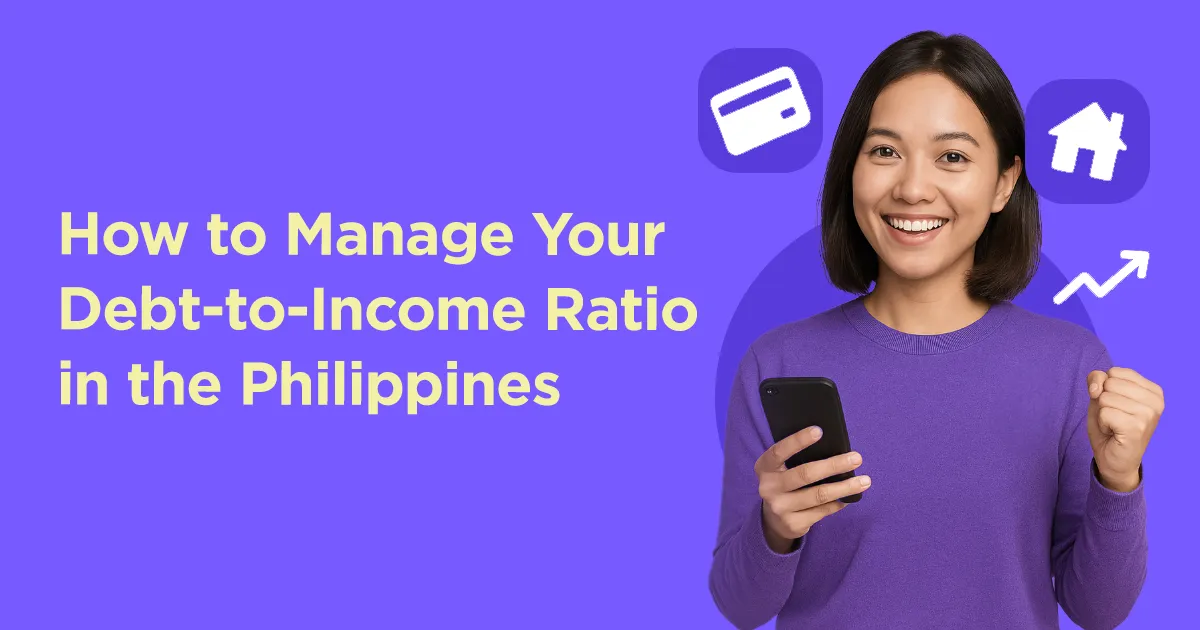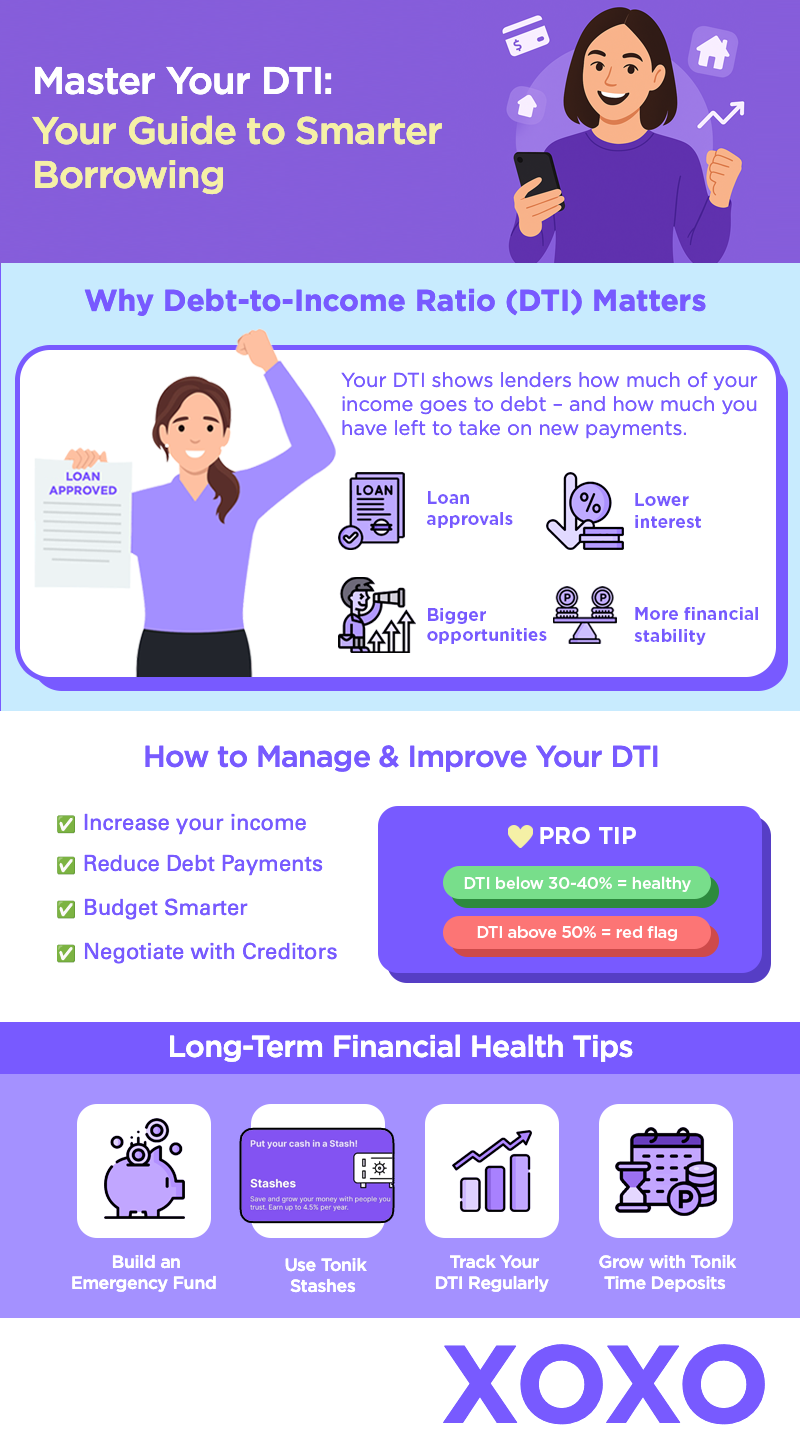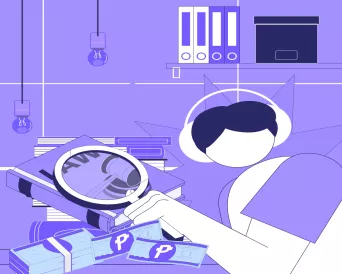
Quick Take: What is Debt to Income Ratio and how does it help?
Want better loan approval chances and lower interest rates? It all starts with your debt-to-income ratio (DTI). This simple number tells lenders how much of your income goes to debt—and whether you can handle more. The lower your DTI, the better your shot at getting that “approved” stamp. 💸 Don’t worry, Luv—Tonik’s here to show you how to calculate, manage, and improve it like a pro. Let’s go! 💪
Table of Contents

What is Debt-to-Income Ratio (DTI) formula?
Here’s the debt-to-income ratio formula:
DTI = Total Monthly Debt Payments ÷ Gross Monthly Income
A lower DTI = happier lenders + better chances of loan approval + a potential for lower interest rates (yes please!). It also works hand in hand with your credit score — both tell lenders how financially responsible you are.
For example:
If your total monthly debt (loans, credit cards, etc.) is ₱10,000 and your gross monthly income is ₱25,000:
DTI = ₱10,000 ÷ ₱25,000 = 0.40 or 40%.
👉 Gross income means your total income before deductions (like taxes or contributions).
👉 Net income is what you actually take home.
FYI – for debt-to-income ratio calculations, lenders usually use your gross income.
Why Your Debt-to-Income Ratio (DTI) Matters in the Philippines
Think of your DTI as your financial “health meter.” It shows lenders how much of your income goes toward paying debt — and how much wiggle room you have left to take on new payments.
Banks, credit card companies, and even fintech apps check your DTI when you apply for:
- Personal loans
- Credit cards
- Home or auto financing
They want to make sure you can comfortably handle new payments without stretching yourself too thin.
For example:
- Person A: earns ₱25,000 and pays ₱10,000 in monthly debt → DTI = 40%
- Person B: earns ₱25,000 but pays ₱15,000 in debt → DTI = 60%
Between the two, Person A is more likely to get their loan approval — because they’ve got more breathing room in their budget. 💸
How to Calculate Your DTI (Step-by-Step)
Ready to compute your own debt-to-income ratio? Let’s go!
- List all your monthly debt obligations – include credit card minimum payments, loan amortizations, or any fixed repayments you make every month.
- Compute your total monthly income – add your salary, side hustles, freelance earnings, or regular remittances.
- Divide total debt by total income – and voila! That’s your DTI ratio!
For example:
You earn ₱25,000 a month and pay ₱10,000 in debt → ₱10,000 ÷ ₱25,000 = 0.40 or 40% DTI
That’s still manageable — but remember, the lower your DTI, the better your chances at landing that loan or credit card you’ve been eyeing!
How to Manage & Improve Your DTI 💪
If your debt-to-income ratio feels a bit high, don’t worry! Here are some ways to improve it:
- Increase Your Income
- Take a side hustle (freelance work, online selling, or part-time gigs).
- Try passive income options like renting out a space or selling digital products.
- Reduce Debt Payments
- Pay off high-interest debts first (hello, credit cards 👀).
- Consider debt consolidation or refinancing to lower those interest rates.
- Avoid taking new loans unless absolutely necessary.
- Adjust Your Lifestyle & Budget
- Cut back on non-essentials – subscriptions, impulsive online shopping sprees, or dining out.
- Try budgeting methods like the 50/30/20 rule or zero-based budgeting to stay on track!
- Negotiate with Creditors
- Ask for lower interest rates or extended payment terms
- Try a balance transfer – move your high-interest balance to a lower-rate card and save yourself some cash!
Ideal Debt-to-Income Ratio Targets 🎯
Here’s what most lenders in the Philippines look for:
Loan Type | Ideal DTI Ratio |
|---|---|
Personal Loans | Below 40% |
Home/Mortgage Loans | 35–40% |
Credit Cards | Keep below 30% |
📝 Pro tip:
- A DTI below 30–40% = healthy!
- A DTI above 50% = 🚩 red flag for lenders (suggests your income might be stretched thin!)
Long-Term Financial Health Tips
- Build an emergency fund (3–6 months of expenses) to avoid continuous borrowing when life throws curveballs.
- Use Tonik Stashes to organize your savings goals – whether it’s for rent, bills, or those “just-in-case” moments, Stashes help you stay organized and save smarter!
- Avoid lifestyle inflation — when you earn more, save more!
- Track your DTI regularly — make it part of your quarterly money checkup.
- Try Tonik’s Time Deposits to make your money work harder – lock it in for a fixed period and enjoy up to 6% interest, hassle-free. 💸
Want more ways to keep your finances in shape? Check out more Tonik-approved financial health tips here!
Common Mistakes to Avoid 🚫
- Counting only salary and ignoring bonuses or variable income.
- Taking multiple small loans thinking they don’t matter (spoiler: they totally do).
- Forgetting informal debts – like loans from relatives or informal lenders.
FAQs
Q: What’s a good debt-to-income ratio in the Philippines?
A: Aim for 30-40% to stay in the safe zone.
Q: Can I still get approved if my DTI is high?
A: Possibly! Some fintech lenders or banks consider other factors like income stability and credit history.
Q: Does DTI affect my credit score?
A: Not directly, but it can impact your loan approval and payment history – both of which affect your credit score over time.
Q: How do lenders verify my DTI?
A: They’ll check your income documents (payslips, bank statements) and your existing debts via credit bureaus.
Final Thoughts
If you’re working on improving your debt-to-income ratio and boosting your credit health, Tonik’s Credit Builder Loan is your new BFF. 🫶 It’s designed to help you build a solid repayment history while keeping your monthly payments easy on the wallet. Start small, pay on time, and watch your creditworthiness glow up!
Because you deserve financial freedom that actually feels good – not stressful. 💜


